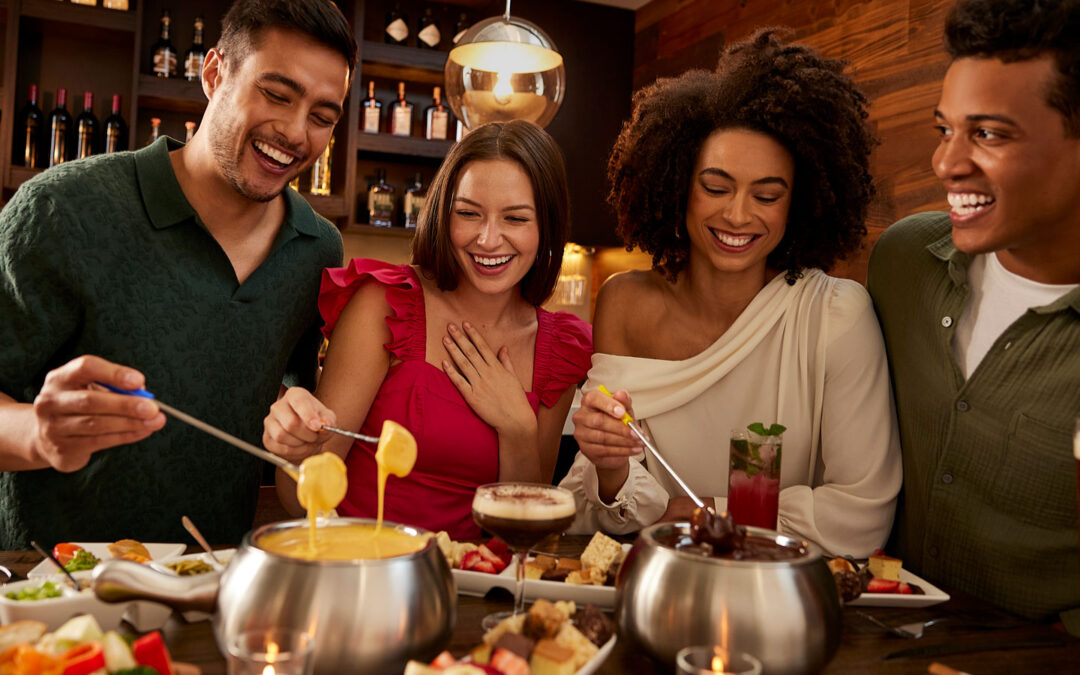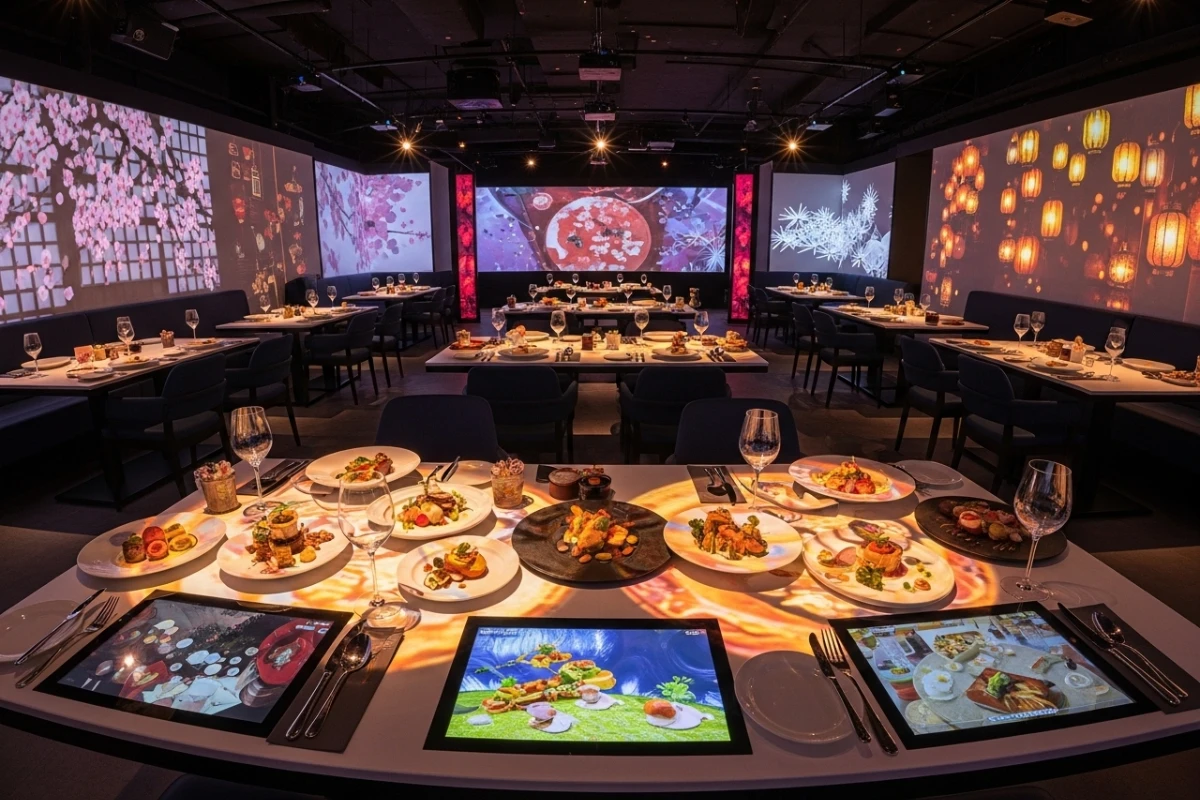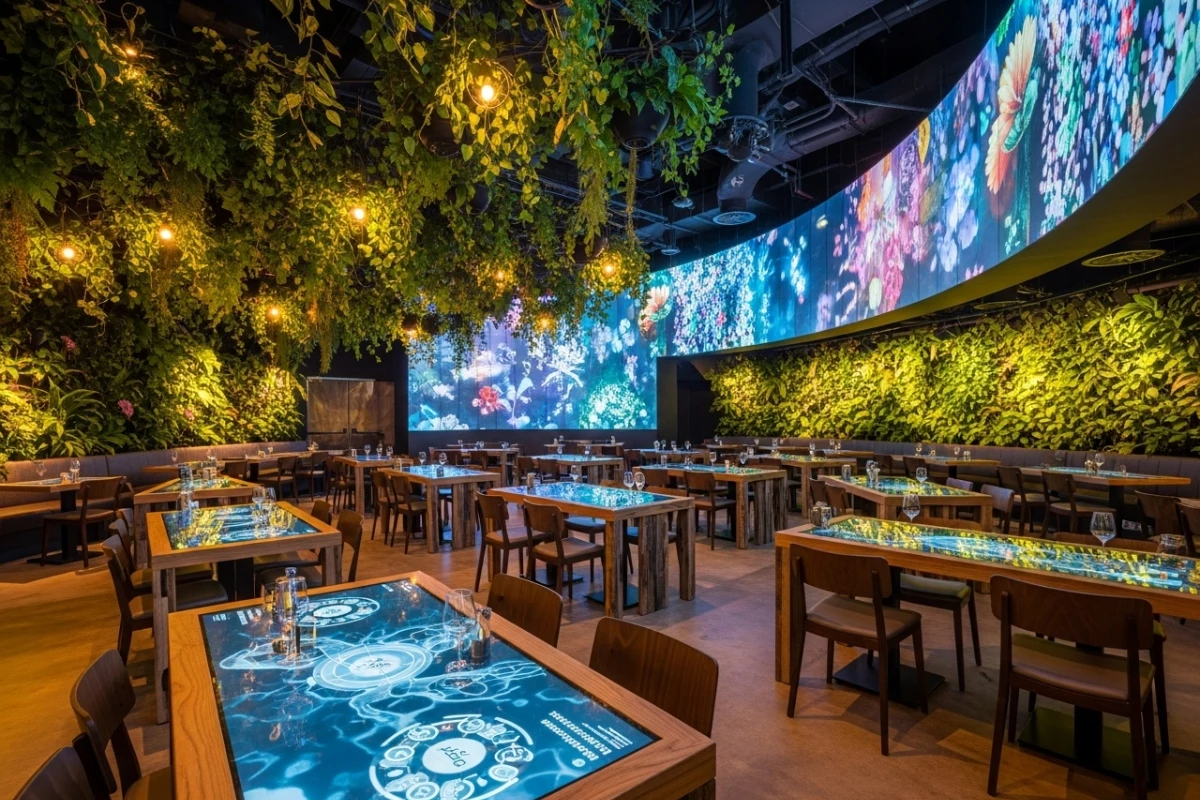Experiential dining transforms traditional restaurants by merging culinary excellence with interactive, immersive elements. Entrepreneurs are increasingly drawn to The Melting Pot franchise model because it differentiates customer engagement and opens multiple revenue streams.
This article provides insights into developing, managing, and promoting a business built on immersive culinary events, focusing on themed decor, technology integration (such as augmented reality and projection mapping), and innovative menu design to enhance customer satisfaction and profitability.
What Is Experiential Dining and Why Is It a Growing Business Opportunity?
Experiential dining goes beyond serving food by creating multisensory environments that fully engage guests. It incorporates themed decor, storytelling, and sometimes augmented reality to turn a meal into a memorable event. Today’s consumers—especially millennials and Generation Z—seek unique experiences and social media-worthy moments. This focus on experience allows for premium pricing and drives customer loyalty, translating into higher revenue.
How Do Immersive Dining Experiences Define Experiential Dining?
Immersive dining is defined by its integration of interactive elements with quality cuisine. Guests may find themselves part of a theatrical narrative while enjoying a meal, thanks to technologies like projection mapping and augmented reality. Such integration not only enhances customer satisfaction but also encourages repeat visits. Restaurateurs invest in creative decor, narrative-driven menus, and well-trained staff to deliver these unique experiences.
How Can You Develop Successful Culinary Event Ideas for Experiential Dining?
Successful culinary events require a deep understanding of the target audience and current trends. Beyond serving food, these events focus on the complete dining journey. Entrepreneurs create memorable experiences by aligning themed menus with coordinated decor, music, and performance elements while ensuring operational feasibility.
Key Elements of Themed Events and Culinary Journeys
Critical elements include narrative storytelling, atmospheric decor, and interactive components. A clear storyline guides guests from entry to exit, enhanced by appropriate lighting, music, costumes, and synchronized interactive demonstrations. Each element is designed to contribute to a seamless, memorable culinary journey.
What Are the Business Models and Revenue Streams in Experiential Dining?
Experiential dining typically combines traditional food and beverage sales with innovative event-driven income. In addition to regular dining revenue, businesses earn from ticketed special events, merchandise, and strategic partnerships. This multifaceted model reduces risk and increases profitability by diversifying income sources.
How Do Pop-Up Restaurant Businesses Generate Income?
Pop-ups generate income through high-impact, short-term events that command premium pricing. They leverage exclusivity, partnerships, sponsorships, and limited-edition offerings to boost revenue. The dynamic nature of pop-ups in urban settings often results in quick returns on investment and strong brand loyalty. Recent research shows 75% of people are willing to pay more for a one-of-a-kind dining experience.
How Do You Create Memorable and Instagram-Worthy Experiential Dining Events?
Creating standout dining events involves balancing culinary innovation, thematic consistency, and smart technology. Every detail—from food presentation to interactive decor—is designed to evoke strong sensory responses and encourage social sharing. When well-executed, these events become shareable, helping to attract new customers and build repeat business.
Best Practices for Thematic Cohesion in Food, Decor, and Entertainment
Achieving thematic cohesion means uniting all visual and sensory aspects of the dining experience. For example, a vintage speakeasy theme would feature period-specific music, antique decor, classic cocktails, and thoughtfully presented dishes. Uniform color schemes and carefully selected decorative elements ensure that the theme resonates with guests and stands out on social media.
What Are Examples of Successful Immersive Dining Experiences?
Examples of success include communal fondue dining at The Melting Pot and themed pop-ups that transport guests to different eras or fantasy worlds. These ventures effectively combine creative storytelling with innovative technology to deliver unique, memorable experiences that are both profitable and widely celebrated.
More: Fine Dining Franchises: Are They Worth the Investment?
How Do You Market and Promote an Experiential Dining Business Opportunity?
A successful campaign blends digital and traditional tactics—social media pushes, influencer partnerships, targeted ads and SEO-optimized content all spotlight your restaurant’s immersive edge. Complement these with preview events and loyalty rewards to cultivate a dedicated community that feels part of the experience.
Pair vibrant online assets—behind-the-scenes videos, virtual tours and email exclusives—with live social storytelling on Instagram, Facebook or TikTok. Collaborations with local artists, event planners and tech partners extend your reach, creating shareable moments and co-branded activations that drive both engagement and revenue.
What Are Future Trends and Innovations in Experiential Dining Businesses?
Future trends are driven by increased technological integration and the rising demand for sustainability. Innovations such as augmented reality, interactive projection mapping, and personalized digital experiences promise to further transform the dining landscape. These trends will help create even more engaging environments that adapt in real time to customer feedback.
How Will Technology Enhance Immersive Dining Experiences?
Technology facilitates dynamic guest interactions by overlaying digital enhancements onto the physical dining space. Tools like augmented reality apps and projection mapping create customized experiences that engage customers in real time while improving operational efficiency through digital ordering and contactless payments.
What Emerging Themes Are Shaping Unique Restaurant Concepts?
Emerging themes include sustainability, local authenticity, and futuristic designs. Restaurateurs are increasingly using eco-friendly practices and locally sourced ingredients and are exploring themes that evoke nostalgia or futuristic digital art, appealing to both community values and tech-savvy consumers.
Table: Key Elements of Experiential Dining Business Models
Before continuing, the following table summarizes key elements critical to an experiential dining business:
| Element | Attribute | Benefit | Example/Value |
|---|---|---|---|
| Thematic Storytelling | Immersive narrative | Enhances customer engagement | Customized, memorable menus |
| Technology Integration | AR/VR, projection mapping | Creates an interactive dining environment | 30% increase in social media shares |
| Operational Flexibility | Pop-up events, adaptive menu | Drives innovation and reduces overhead | Agile event planning framework |
| Marketing & Partnerships | Digital campaigns and collabs | Builds brand visibility and credibility | Influencer partnerships, local arts |
| Sustainability Practices | Local sourcing, eco materials | Improves brand loyalty and reduces cost | 20% reduction in waste annually |
What are the key challenges and solutions to Launch an experiential dining business?
Starting an experiential dining business means managing high investments, complex logistics, and the constant need for fresh themes. Entrepreneurs must address supply chain challenges, train staff rigorously, and implement risk management strategies. Practical solutions include hiring experienced consultants, partnering with reliable vendors, and using real-time feedback to continuously improve operations.
How Do You Market and Promote an Experiential Dining Business Opportunity?
Marketing relies on a diverse mix of digital strategies and event-based promotions. By focusing on social media channels, preview events, and loyalty programs, businesses can build strong relationships with customers and attract franchise interest. Effective storytelling and clear communication of the unique dining experience are key to standing out in a competitive market.
How Do You Create Memorable and Instagram-Worthy Experiential Dining Events?
Attention to detail in every aspect of the dining experience is essential. Consistent thematic decor, innovative culinary techniques, and synchronized entertainment create a narrative that guests naturally want to share. High-quality photography and flawless service further ensure that each event becomes a powerful brand statement that drives repeat patronage. Whether through interactive desserts like fondue, themed sweet bars, or other engaging elements such as projection mapping and augmented reality to heighten the sensory impact.



